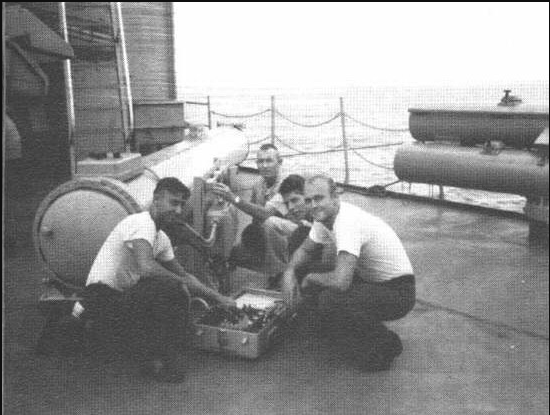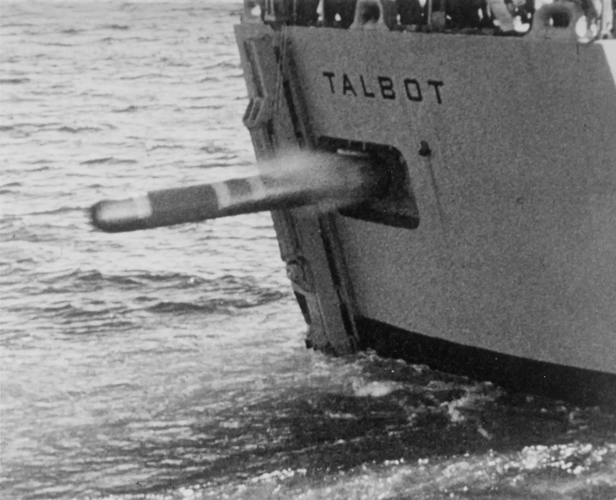johnpjones1775
ACCESS: Secret
- Joined
- 27 May 2023
- Messages
- 491
- Reaction score
- 195
I said nothing about ‘heavy ASW’ capabilities whatever that means.That's the job of a missile FAC these days.Cyclones did have ASMs equipped in the form of griffin ASMs, however as I’ve noted I think the cyclones and the FRCs (and their predecessors) are woefully undergunnedYou need to be more specific about the scenario. Where is this patrol vessel operating and what is it doing? My thoughts:We’re talking about a patrol vessel with some real offensive and defensive capability.
Enough capability that can make an attacker question, is it worth the cost to attack this vessel?
Scenario 1: Forward deployed in peacetime
Won’t need those ASMs or SAMs any more than the Cyclone class or USCG cutters who do the same job today.
Scenario 2: Defensive ASW patrols in wartime
Will be hundreds or thousands of miles from the forward line of operations. It is not going to come across enemy ship or missile threats, short of a full sortie by a major enemy fleet.
Scenario 3: Operating in a combat zone. Not a job for a patrol boat anymore, but a full-on missile corvette or frigate.
Note that the above hasn’t really changed since WWII, where sub chasers, sloops, and corvettes did one job while destroyers and light cruisers did another. (With late war frigates & destroyer escorts kind of being a general purpose hybrid, similar to a Cold War FFG-7 or 1990s Meko / La Fayette general purpose frigate).
A properly armed PC or OPV could fill the same role as a WWII PT boat.
Which means you need Harpoon or equivalent missiles (or Tomahawk Block 4 ASMs, which require an even heavier launcher), plus the combat sensors to give them targets.
And those sensors and combat systems are the expensive parts of a ship!
So, you want an OPV with heavy ASW capabilities plus antiship missiles, and enough AA to make attacking one a questionable activity?A corvette would fill the same role as well WWII corvettes and DEs.
Such a thing would be on the order of 1000 tons minimum displacement, and probably closer to the size of a full on FFG7. Not cheap, either, due to all the fancy systems.
And honestly, it would definitely be something that would benefit from something like the LCS modules and/or STANFLEX. You'd need to have some extra combat modules laid out ahead of time, because the typical missions would not require the full combat capabilities. I'd leave the AAW capabilities in. It may be useful to be able to swap between gun modules, 57mm for the usual patrolling, 3" guided/rocket boosted for full combat.
I said 1 sonar, 4 VLS, RAM, and mk110.
That can all be fit on something the size of a river class quite easily.
A smaller vessel it’s a bit harder, and either the RAM or mk110 might have to be left behind.
And as I said before ESSM isn’t a slouch in ASuW.
Probably won’t sink a modern DDG or FFG, but they could definitely mission kill a modern major combatant.
History : TCG Muavenet destroyer shot by 2 Sea Sparrow missiles
TCG Muavenet destroyer shot by 2 Sea Sparrow missiles fired from the aircraft carrier USS Saratoga during a NATO exercise in Saros Bay, Turkey in 1992, resulting in death and injury among its crew.
 defencehub.live
defencehub.live
i'll admit i don't actually care about the tonnage but i'm looking at something in the 200ft long range 200-275ft long and 30-40ft or so abeam. if that comes out to 500tons or 1500tons doesn't actually matter that much. over all size stays small, ship stays relatively cheap.
as for weight and what can handle what, as i've stated before, a mk VI boat can carry 4 NSMs. sea giraffe radar can target air and surface tracks. there are variations of sea giraffe that can be fitted to riverine assault craft. a large 3000ton ship is not needed to achieve what you described, and it certainly isn't necessary to mount 4 cell VLS, a gun, and a sonar.
btw sea giraffe is only $25million dollars. not cheap by any means, but when compared to spy which comes in at around $300m i think we can call that pretty low cost

AN/SPY-6 - Wikipedia
Last edited:







